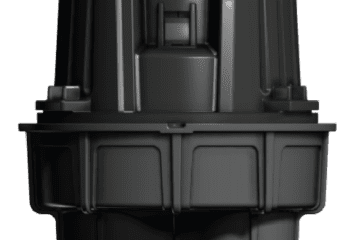Chemical dosing installation checklist
Tips for our EcoRange

Wall-mounted chemical dosing systems are usually quick and relatively easy to install. Most manufacturers supply comprehensive manuals to aid installation, while others take a more tangible approach in the form of installation videos to demonstrate how to fit the system.
Nevertheless, sometimes small issues may arise during installation that could potentially affect the final performance of the system. These tend to be minor matters that can be easily resolved as long as the installer knows what to look for.
Check out our chemical dosing installation checklist below to help facilitate set-up and performance:
- Water flow: Before activating the proportioner, ensure that it is correctly connected to the water mains, with the water pressure set between 30 PSI – 70 PSI (2 – 5 bar). Water in excess of 70PSI may block water flow.
- Chemical suction: On most proportioners, the venturi is the apparatus that draws the chemical in. Creating a vacuum is the underlying principle of such venturi technology therefore it is crucial that there is adequate suction to enable the chemical concentrate to be drawn in and mixed with the water to produce a ready-to-use cleaning solution. If you are experiencing low or no chemical suction, check that the water pressure is not below 30 PSI (2 bar). Other key areas to look at include inspecting the tubing to ensure that it is not kinked, assessing the foot and dilution valves for blockage and making sure that the flood ring in the outlet tube is secured firmly in place.
- Chemical dilution: The main benefit of wall-mounted proportioners lies in their ability to precisely dose and dilute chemicals at point-of-use by the end-user. These systems move away from the traditional “glug-glug method” of mixing chemicals with water and instead enable technicians to set the exact chemical ratio required for specific cleaning applications.
To set the desired ratio, most chemical proportioning systems come with metering tips which can often be cumbersome to use. In response to this, Brightwell has designed a patented dilution pin to make the process of changing the dilution ratio easier. If too much chemical is being dispensed or if your customer wants to change the dilution ratio, technicians just need to turn the dilution pin on the proportioner and align it with the desired letter. Each letter indicates a specific dilution ratio which can be found on the corresponding dilution ratio chart supplied with Brightwell chemical dosing systems.
Another issue that arises when dispensing into a bottle is chemical foaming. To overcome this, ensure that the end of the outlet tube is firmly touching the base of the bottle. Too much space between the outlet tube and the bottle will result in excessive aeration causing the chemical to foam in the bottle.The above checklist is a guide to help you promptly resolve issues which may come up during installation. However, if in doubt, get in contact with the equipment manufacturer, who should be happy to assist you with any queries.
The above checklist is a guide to help you promptly resolve issues which may come up during installation. However, if in doubt, get in contact with the equipment manufacturer, who should be happy to assist you with any queries.
Contact us today to enquire about our EcoRange of chemical dispensing systems



